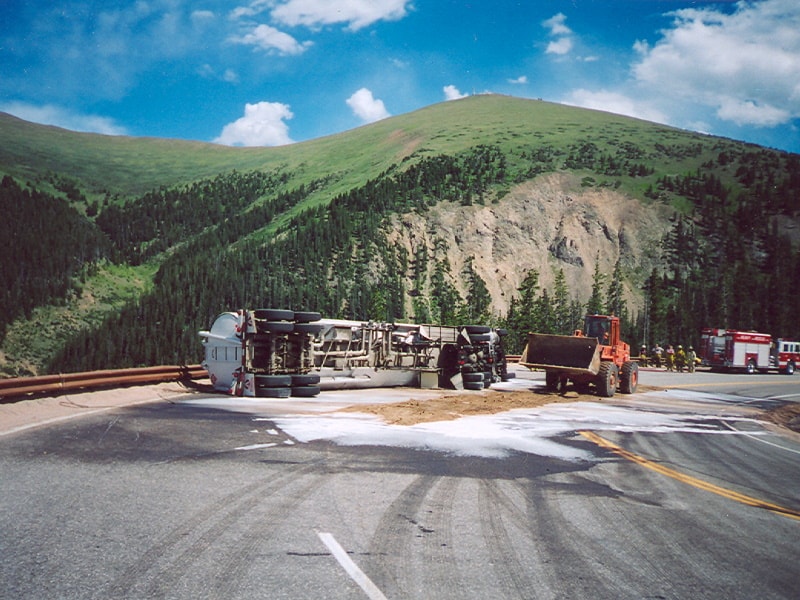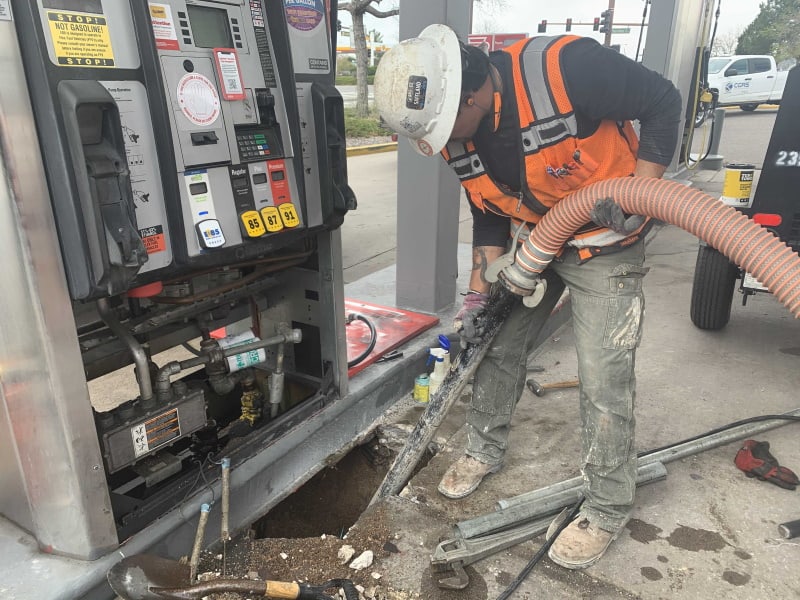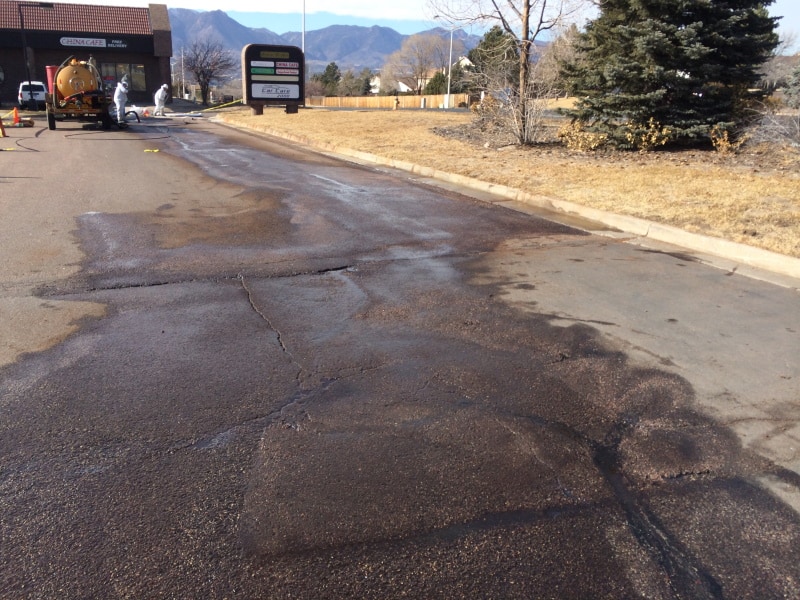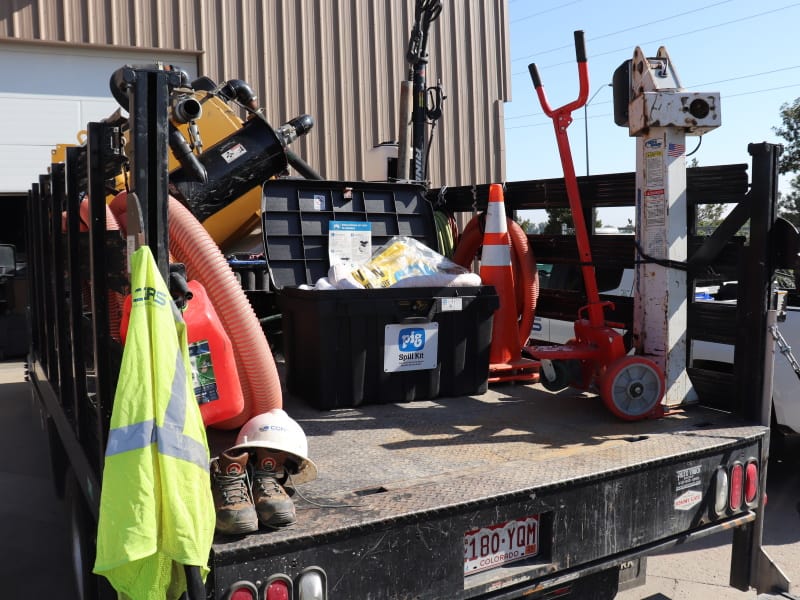Petroleum releases: what to expect from your emergency responders
It’s not just time that’s of the essence when a petroleum release is experienced; it’s also environmental and regulatory expertise.
It’s imperative to prevent the product from impacting the soil and groundwater, thus protecting human health and the environment, and to meet regulating authorities’ specific reporting demands. Doing so could mean the difference between owners/operators footing the clean-up bill – even if the release wasn’t their fault – or knowing when they might qualify for financial relief.
Regulatory expectations
The state regulatory agency requires the reporting of a petroleum release of 25 gallons or more or if it impacts “waters of the state,” meaning storm drains, surface waters or the like, within 24 hours.
“Because of the potential impact to people, the environment and the business, it is our job to react promptly to spills and get on site quickly to control the situation and gather as much information as possible,” said Matt Newcomb, CGRS Environmental Services Field Supervisor. “We mobilize within one hour, responding to anywhere in Colorado or the surrounding states.”
Call a CGRS Expert:
800.288.2657

Glen Vallance
Principal/Environmental
Services Manager
Mobile: 970.420.6840
CGRS has responded to many petroleum releases from various sources over the years:
- Underground storage tank (UST) overfills
- Automotive gas tank overfills at the pump
- Infrastructure damage including
- subsurface product piping damage
- subsurface tank damage
- dispensers damaged by vehicles
- piping or tank failures
- Tanker truck rollovers/accidents
- Natural disasters (lightning strikes are rare, but they do happen)
Professional response
You’ll know the emergency response team responding to a petroleum release is professional when it:
- First ensures the release has been stopped and is contained. Oftentimes, local fire authorities have already responded and begun cleanup.
- Assesses what the approximate volume or extent of the release is, determine whether more manpower or equipment is needed, and make the appropriate arrangements if it is. A large product spill, one that has encountered a storm drain, or one that precipitation or traffic, for instance, has influenced may require more personnel and/or equipment.
- Obtains an account of what happened from on-site personnel. Most sites have video of the event and fuel-management systems, such as automatic tank-gauging systems, are also a great resource for tank overfill-related information.
Using the information gathered above, the emergency response team should then investigate to verify the reports:
- Assessing all storm drains in the vicinity for impacts, looking farther down the drain system to determine the exact extent. They will then use the appropriate equipment to clean the drains.
- Identifying any areas in which a product could have encountered soil and, if so, sample the soil and define the vertical extent of impacts. Significant impact to the soil could require additional excavation.
In the case of a product release at a fuel station, the business often can remain open despite the event. If the release is a result of a UST or gas tank overfill, the emergency response team can set up an exclusion zone around the area of the release during assessment and cleanup. If the release occurred from damage or component failure, the station can remain open only if the team can ensure the problem is isolated.
Finishing the job
On a small scale, the emergency response is complete when the responding personnel have cleaned up and properly contained the release’s impacts. But the job isn’t complete until they or the owner/operator have filed the necessary reports and the state regulating authorities have determined the event is closed. Sometimes this takes only a matter of days, and other times it can take months or longer, depending on the extent of the release and the environmental impact.
Financial impact
Owners/operators are not necessarily the ones responsible for the cost of cleanup if they’re not responsible for the release.
- If a UST overflows while it’s being filled, the truck driver or his/her insurance company may be responsible for the bill.
- If the release is a result of subsurface damage from utility installations, the utility installer (likely its insurance company) is held accountable for the cleanup costs.
- The driver of a vehicle who causes damage or release when purchasing fuel also may be responsible, though it’s not uncommon for drive-offs to happen, leaving the owner/operator with the bill.
- The cost of cleanup would fall on the owner/operator if the release is due to a component failure, though a UST system component failure may qualify them for reimbursement under Colorado’s Petroleum Storage Tank Fund.
- If a tanker rolls over and spills some of its fuel, its insurance company or that of the driver responsible for the accident will likely cover the expenses.
Learn about CGRS’s professional Emergency Spill Response service or call 800.288.2657 to talk with an expert.
A Peak Inside the Environmental Professional’s Emergency Response Toolbox
- Spill kit for both oil/fuel and chemical cleanup
- Personal protection equipment including neon vest or shirt, safety glasses or goggles, hard hat, steel toe shoes, and a mask or face covering
- Photoionization Detector (PID) to screen for volatile organic chemicals (VOCs)
- Hand auger tool for sampling soil
- Hydro-excavator (a combination of a pressure washer and a vacuum used to clean up soils and liquids)
- Sampling supplies
- OSHA Hazwoper 40-hour training






